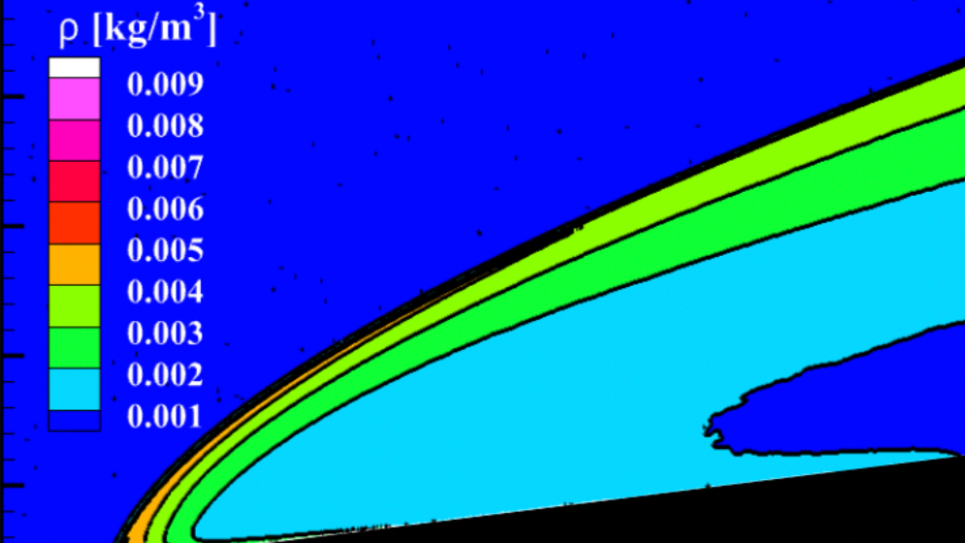
Experimental interferogram of a Mach 8.7 flow with preliminary DSMC solution: Low fidelity DSMC solution for experimental run shown.
This team utilizes large-scale computational tools to help understand how adequately reduced-order formulations can capture the strong coupling between the fluid mechanics of the gas flow and the transport properties of the high-temperature gas.
It is clear that hypersonic flight has the potential to completely change the defense industry. However, much of the physics that characterizes hypersonic flight is still unknown or poorly characterized, particularly at regimes where strong thermo-chemical non-equilibrium is present. A key question is to understand how adequately reduced-order formulations, used in computational fluid dynamics design codes, can capture the strong coupling between the fluid mechanics of the gas flow, the local gas-phase thermochemical non-equilibrium, and the transport properties of the high-temperature gas. Traditionally, these physics have been intensely investigated separately by producing simplified models that tend to reproduce only certain aspects of the physics characterizing high-speed, reacting flows.
Large-scale computational tools have been developed that enable researchers to obtain entire hypersonic flow fields solely from the fundamental interactions of atoms and molecules in the gas. Such interactions are directly obtained from quantum mechanics. Hence, such solutions are from first-principles as they are free of any empiricism. This technique is called Direct Molecular Simulation (DMS). Through the use of massively-parallel DMS simulations, this project will enable the computation of flows around geometries at length scales at which experiments can be conducted. The goal of the project is to compare simulated atomic-level flow field details derived from quantum chemistry with experimentally captured data.